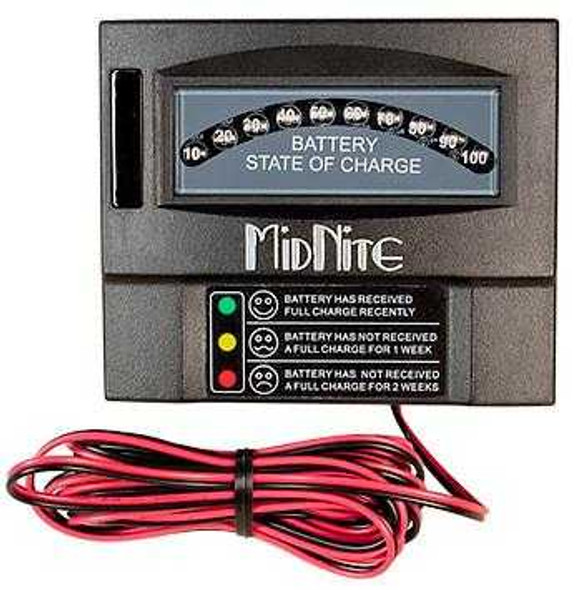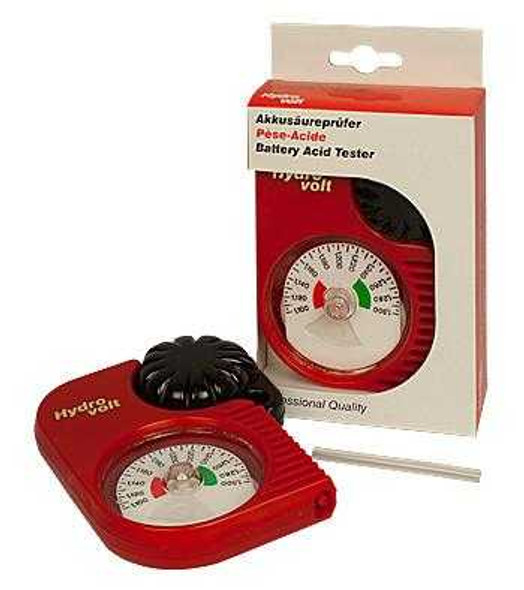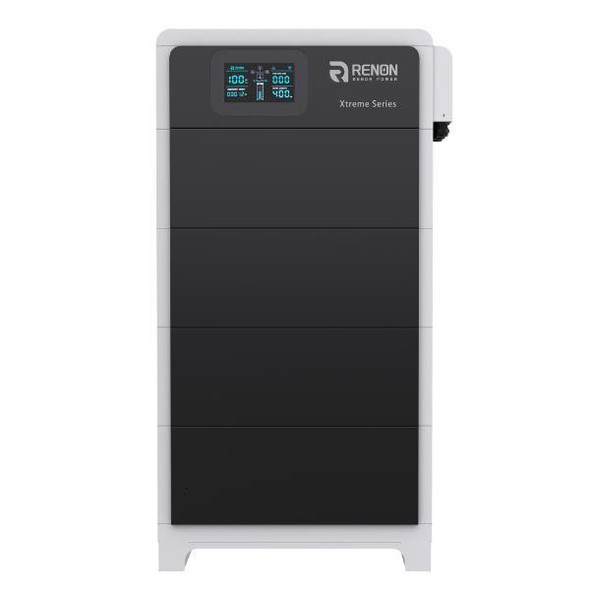
Batteries
- Product
- Qty in Cart
- Quantity
- Price
- Subtotal
-
On Sale

Battery Capacity Meter
MidNite Solar
Now: $70.50Was: $94.00Midnite Has A New Battery Capacity Meter. This Meter Was Designed For Our Africa Distributor To Aid In Keeping Batteries Alive Longer.FEATURES: LED's That Correspond To Battery Voltage Accuracy +- .05% Auto Sensing For 12, 24, 36, And 48 Volt...Now: $70.50Was: $94.00 -
On Sale

Battery Hydrometer
MidNite Solar
Now: $37.50Was: $50.00DESCRIPTION: Easy To Use Battery Hydrometer For Checking The Specific Gravity On All "Flooded" Style Batteries. Battery Hydrometer For Use On Flooded Batteries To Check Specific Gravity.* Warranty - 5 Yrs.Clear Rubber Tube Can Be Replaced With A Vinyl...Now: $37.50Was: $50.00 -


XTreme Main Control
Renon Power
$1,334.36This controller is included in the Xtreme Home Battery System Renon XTreme Main Control – The Intelligent Power Hub for Your Energy Storage System In a world that increasingly demands smarter, more flexible, and more reliable energy systems, the...$1,334.36 -


Renon XTreme Stack Battery Module
Renon Power
$1,662.38See the full features of the Renon Xtreme Home Battery Power System in our Energy Stroage Systems Catagory In today’s energy-conscious world, homeowners are searching for reliable, flexible, and long-lasting battery storage systems that...$1,662.38 -


Fortress Power eVault MAX 18.5 kWh
Fortress Power
$6,479.00Fortress Power eVault MAX 18.5kWh: Your Foundation for Energy Independence In a world of rising electricity costs and unpredictable power outages, the Fortress Power eVault MAX 18.5kWh offers a powerful and comprehensive solution. This all-in-one...$6,479.00 -


Fortress Power eForce Stackable Whole-Home Energy Storage System
Fortress Power
MSRP: $3,865.00 - $11,854.00$3,645.00 - $11,684.00Fortress Power eForce Stackable Energy Storage System : The Ultimate Stackable Home Energy Storage Solution Are you searching for a reliable and efficient way to store solar energy and ensure backup power for your home? Look no further than the Fortress...MSRP: $3,865.00 - $11,854.00$3,645.00 - $11,684.00Qty in Cart: 0Quantity:Price:MSRP: $3,865.00 - $11,854.00$3,645.00 - $11,684.00Subtotal: -
On Sale


Fortress Power eFlex MAX 5.4 kW
Fortress Power
Now: $1,449.00Was: $1,809.00The Fortress Power eFlex Max 5.4kW: Unmatched Durability and Efficiency for Your Energy Independence The Fortress Power eFlex Max 5.4kW 48V battery is engineered to be the cornerstone of your residential, off-grid, or DIY solar power system. This isn't...Now: $1,449.00Was: $1,809.00 -


Fortress Power FlexTower
Fortress Power
$1,485.00 - $2,970.00Fortress Power FlexTower: The Ultimate All-in-One Energy Storage Solution The Fortress Power FlexTower Full System Enclosure redefines residential and light commercial energy storage by combining a powerful battery and a hybrid inverter into a single,...$1,485.00 - $2,970.00 -

Fortress Power eForce Wallmount Bracket
Fortress Power
$289.00Fortress Power eForce Wall Mounting Kit: Your Space-Saving Solution The Fortress Power eForce Wall Mounting Kit offers a secure, streamlined solution for installing your eForce energy storage system. Designed with the modern homeowner, DIY...$289.00 -


Fortress Power eForce eWay & Base
Fortress Power
$749.00Fortress Power eWay and Base: Unleash the Full Potential of Your eForce Energy Storage System The journey to energy independence is not just about having powerful solar panels and reliable batteries; it's also about a system that is organized,...$749.00
Lithium Batteries Solar Power Storage :
Are you ready to revolutionize the way we harness and store solar energy? We're diving into the world of lithium batteries, the powerhouse behind modern solar power storage. As solar energy gains momentum, the need for efficient and reliable storage solutions has become crucial. That's where lithium batteries come in, offering a game-changing solution for both homeowners and businesses looking to maximize their solar investment.
Let's explore the ins and outs of lithium batteries and their role in solar power storage. We'll break down the technical aspects that make these batteries so effective, from their impressive energy density to their long cycle life. Plus, we'll look at real-world applications and case studies that showcase how lithium solar batteries are transforming the renewable energy landscape. By the end, you'll have a clear picture of why lithium batteries are leading the charge in solar power storage and how they might fit into your own energy plans.
Lithium Batteries: Powering the Solar Revolution
The role of energy storage in solar adoption
We're witnessing a revolutionary shift in the world of clean energy, and storage is at the heart of it all. As we push towards a greener future, ramping up energy storage on the U.S. grid is becoming crucial, no matter what resource it's paired with. But here's the kicker: the success of storage technology is closely tied to solar because of its potential for meteoric growth in the solar sector.
Let's look at some eye-opening stats. A May 2021 report from Lawrence Berkeley National Lab showed that among all energy generation projects in interconnection queues nationwide, solar is leading the pack when it comes to pairing with energy storage. While only 6% of wind and natural gas projects in the queue have storage attached, a whopping 34% of pending solar projects are paired with batteries. This trend speaks volumes about the future of solar and storage integration.
Why lithium batteries are ideal for solar applications
Now, you might be wondering, "Why lithium batteries?" Well, they've emerged as the frontrunners in the battery energy storage game, and for good reason. Lithium-ion batteries boast higher efficiency, impressive energy density, and remarkable power output. These qualities have catapulted them to the top of the battery energy storage market, thanks in large part to their pivotal role in powering the booming electric vehicle industry and our ever-present portable electronic devices.
Let's break down some of the advantages that make lithium-ion batteries ideal for solar applications:
- Higher energy density: Lithium-ion batteries can store more power in a smaller space, perfect for homes where space is at a premium.
- Longer lifespan: With a typical lifespan of 8+ years for large-capacity battery packs, lithium-ion batteries offer a solid return on investment.
- Higher efficiency: Lithium-ion batteries boast an impressive round-trip efficiency of 90-95%, meaning you get more usable energy out of what you store.
- Lower maintenance: Unlike some other battery types, lithium-ion batteries require minimal upkeep, saving you time and hassle.
Market trends and future projections
The future looks bright for lithium-ion batteries in the solar energy storage market. Globally, the total installed capacity of electricity generated from battery and energy storage is predicted to reach a staggering 945 GW by 2050. But that's not all – the market for battery energy storage, currently valued at just over $5 billion, is expected to soar to more than $17 billion by 2028.
What's driving this growth? For one, the cost of lithium-ion batteries has been falling rapidly as manufacturing scales up to support both electric grid applications and electric vehicles. This cost reduction is making lithium-ion solar batteries more affordable for ordinary residential customers.
Moreover, many solar companies view storage as a significant business growth opportunity. While there's still plenty of room for standalone solar growth in most states, the long-term success of the solar industry – and its ability to scale beyond about 20% of total electricity generation – depends on the cost-effective integration of storage.
As we push towards our goal of solar accounting for 30% of electricity generation by 2030, storage will play an increasingly vital role in providing power when the sun isn't shining. With ongoing technological advancements and declining costs, lithium-ion batteries are set to lead the charge in this solar revolution, paving the way for a more sustainable and resilient energy future.
Technical Aspects of Lithium Solar Batteries
Let's dive into the nitty-gritty of lithium solar batteries and explore what makes them tick. We'll break down the key technical aspects that set these powerhouses apart from other energy storage solutions.
Battery Capacity and Power Output
When we talk about solar battery capacity, we're referring to the amount of electricity a battery can store. It's typically measured in ampere-hours (Ah), watt-hours (Wh), or kilowatt-hours (kWh). The bigger the number, the more juice your battery can hold.
What affects this capacity? Well, size matters! Larger batteries generally have higher capacity than smaller ones. But it's not just about physical size – the type of battery plays a crucial role too. Lithium-ion batteries, for instance, pack a bigger punch in terms of energy density compared to their lead-acid cousins of the same size.
Here's where lithium-ion batteries really shine:
- Higher energy density: They can store more power in a smaller space, making them perfect for homes where every square inch counts.
- Impressive efficiency: With a round-trip efficiency between 90% and 95%, you're getting more usable energy out of what you store.
Depth of Discharge and Cycle Life
Now, let's talk about depth of discharge (DoD) – it's a key player in battery performance. DoD refers to how much of the stored energy in a battery you can use compared to its total capacity. Lithium-ion solar batteries are deep cycle batteries, boasting DoDs around 95%. This means you can use more of the stored energy without damaging the battery.
This high DoD contributes to a longer lifespan. Most lithium-ion solar batteries come with a minimum warrantied lifespan of about 10 years or 10,000 cycles, whichever comes first. That's a lot of sunsets and sunrises!
Here's a quick comparison:
|
Battery Type |
Typical DoD |
Lifespan |
|---|---|---|
|
Lithium-ion |
95% |
10+ years |
|
Lead-acid |
50% |
5-7 years |
Temperature Sensitivity and Performance
Temperature plays a big role in how well your lithium battery performs. These batteries have an ideal temperature range where they function best, typically between 68°F to 86°F (20°C to 30°C).
Here's the scoop on temperature effects:
- Cold temperatures: They can reduce battery capacity, but lithium-ion batteries handle the cold better than lead-acid batteries. They also can come with built in heaters in some models.
- High temperatures: This is where we need to be careful. High temps can speed up capacity loss and even lead to safety issues.
To give you an idea, check out this data on capacity loss over a year:
|
Temperature |
40% Charge |
100% Charge |
|---|---|---|
|
0°C (32°F) |
98% |
94% |
|
25°C (77°F) |
96% |
80% |
|
40°C (104°F) |
85% |
65% |
To keep your lithium solar battery happy, aim for that sweet spot of 15°C (59°F) in a cool, dry place. This will help maintain its performance and extend its lifespan, ensuring you get the most out of your solar power system.
Practical Applications and Case Studies
Let's dive into some real-world applications of lithium battery storage in solar power systems. We'll explore how these innovative solutions are making a difference in various sectors.
Residential solar + storage systems
We're seeing a growing trend in residential solar installations paired with lithium battery storage. In Germany, for instance, the government has been supporting household battery storage systems coupled with solar PV panels since May 2013. Initially, about 340 systems were installed annually, but this number has jumped to 600 systems per year since July 2014. The German government offers a grant covering 30% of the battery system's cost.
This initiative has not only increased the adoption of residential solar + storage systems but also led to an increase in the size of battery storage systems over time.
Commercial and industrial implementations
Commercial and industrial sectors are also embracing lithium battery storage solutions. These systems are proving to be game-changers in managing energy demands and reducing costs.
One impressive example is the installation of a 54 kWh aqueous hybrid ion (AHI™) battery with a 10.8 kW solar PV array at a ranch in California. This setup provides continuous access to reliable power without relying on diesel fuel. The ranch owner opted for this microgrid solution as extending grid service was too expensive. The system was sized to provide several days of autonomous power, with a 30 kW diesel generator as backup.
Another noteworthy case is the 500 kW AC storage and inverter combination installed at the headquarters of real estate developer Konterra in Maryland. This system, which includes 300 kWh of lithium-ion batteries, is connected to 400 kW solar PV panels. It not only provides backup emergency power during grid outages but also generates additional revenue through grid services like regulation and fast-power balancing support.
Off-grid and microgrid solutions
Off-grid solar systems with lithium battery storage are revolutionizing energy access in remote regions. These systems offer a powerful means of providing energy in far-flung or underserved areas without relying on centralized grid assets.
Key benefits of off-grid solar systems include:
- Self-sustaining power generation
- Reduced fossil fuel consumption
- Improved quality of life for local residents
- Economic development in remote regions
Microgrids with lithium-ion storage are transforming energy independence and efficiency. For remote or island communities, these systems can significantly reduce reliance on costly fuel imports. In urban settings, microgrids contribute to grid resilience, providing emergency power during outages and alleviating grid stress during peak periods.
